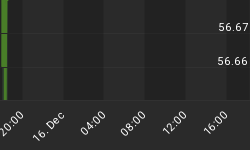10/21/2010 9:01:45 AM
The common refrain of every pull back by the major indexes being followed by another move higher repeated itself.
Recommendation:
Take no action.
Daily Trend Indications:

- Positions indicated as Green are Long positions and those indicated as Red are short positions.
- The State of the Market is used to determine how you should trade. A trending market can ignore support and resistance levels and maintain its direction longer than most traders think it will.
- The BIAS is used to determine how aggressive or defensive you should be with a position. If the BIAS is Bullish but the market is in a Trading state, you might enter a short trade to take advantage of a reversal off of resistance. The BIAS tells you to exit that trade on "weaker" signals than you might otherwise trade on as the market is predisposed to move in the direction of BIAS.
- At Risk is generally neutral represented by "-". When it is "Bullish" or "Bearish" it warns of a potential change in the BIAS.
- The Moving Averages are noted as they are important signposts used by the Chartists community in determining the relative health of the markets.
Current ETF positions are:
Short DIA at $108.57
Short QQQQ at $49.66
Short SPY at $114.82
Daily Trading Action
The major index ETFs opened higher and almost immediately decided to test lower in the first half hour of trading before buyers stepped in as prices moved toward negative territory. Most of the day was then spent moving higher but final hour weakness saws the major indexes finish well off their highs. The Russell-2000 (IWM 70.21 +0.71) posted a one percent gain making up for half of its losses on Tuesday. The Semiconductor Index (SOX 351.78 +2.16) rallied for a fractional gain and closed back up to its 200-Day Moving Average (DMA). The bank indexes both lost nearly one percent with the Bank Index (KBE 22.72 -0.17) losing a little less than the Regional Bank Index (KRE 23.19 -0.22). The 20+ Yr Bonds (TLT 101.91 +0.22) posted a small fractional gain but hasn't yet shaken off its downtrend state. NYSE volume was average with 1.103B shares traded. NASDAQ volume was nearly average with 2,027B shares traded.
Other than the weekly U.S. government report on crude oil inventories, there was a single economic report of interest released:
- MBA Mortgage Applications (Oct 15) fell -10.5% versus the prior month at +14.6%
The report was released two and a half hours before the open.
The key item the market was waiting on was the release of the Fed's beige book. It showed the economy was slightly stronger than anticipated and specifically indicated the Fed expected higher prices at the producer level would translate to higher prices for consumers (inflation) as businesses indicated they intended to pass on higher costs to customers. This suggests that further quantitative easing (QE2) may be in doubt. The bull case has been built on two possibilities:
- strengthening earnings from a stronger economy or
- QE2 will be implemented
The beige book weakened the case for QE2. That caused a sell the news reaction to the release.
The best explanation for Wednesday's jump higher was a fall-off for the U.S. dollar. U.S. stocks have been 80% inversely correlated to movements of the dollar. With the dollar falling off significantly, that provided its own catalyst for stocks.
Implied volatility for the S&P-500 (VIX 19.79 -0.84) fell four percent while implied volatility for the NASDAQ-100 (VXN 21.65 -0.26) fell one percent.
The yield for the 10-year note was essentially unchanged losing one half of a basis point to close at 2.47. The price of the near term futures contract for a barrel of crude oil rose $3.05 to close at $82.54, making up most of the losses seen in Tuesday's trade. The weekly U.S. government report showed a rise in crude oil inventories of 667K barrels.
Market internals were positive with advancers leading decliners 3:1 on the NYSE and by 2:1 on the NASDAQ. Up volume led down volume 2:1 on the NYSE and by nearly 3:1 on the NASDAQ. The index put/call ratio rose 0.24 to close at 1.56. The equity put/call ratio fell 0.01 to close at 0.69.
Commentary:
Wednesday allowed a rally that made up for much of Tuesday's losses. We expected a move higher on Wednesday on lower volume, which is what received but we weren't expecting quite so strong a move. The move was amplified by the falling U.S. dollar.
What we are looking for on Thursday is any of three scenarios. The first is that the bulls gather the courage to drive the major indexes to new highs on Thursday. While this has been happening with some regularity, we don't regard this as the most likely scenario. The second is that prices traded up to recent highs and are rejected but not in a volatile manner. Third is that prices attempt to move higher and are shut down in a significant volume supported move lower. We are not sure what sort of move we will received in the short term, but if the dollar moves higher today, we think the latter is the most likely.
We hope you have enjoyed this edition of the McMillan portfolio. You may send comments to mark@stockbarometer.com.
















